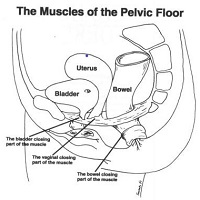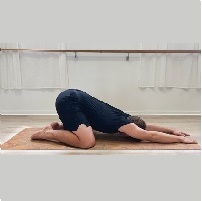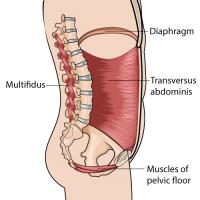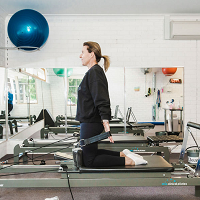Relaxation exercises for your pelvic floor muscles is also called pelvic floor downtraining.
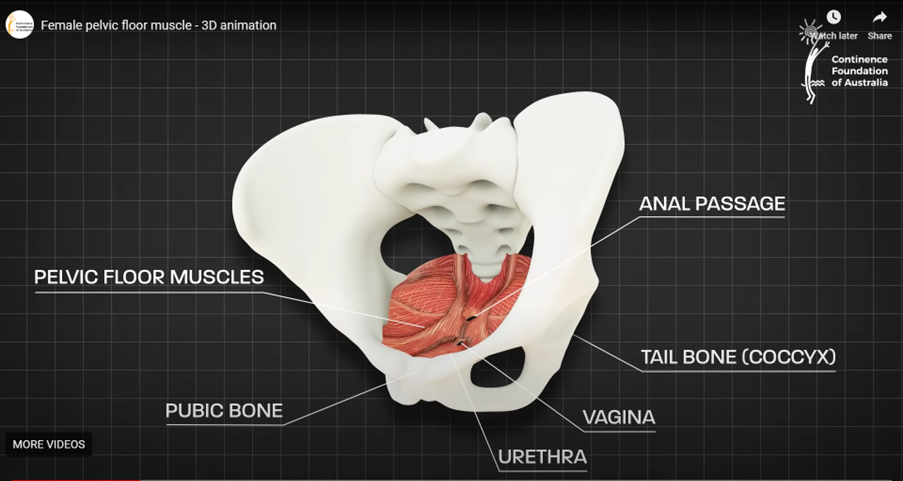
The pelvic floor muscles are a group of muscles located inside the pelvis on the floor of your pelvis. They support your vagina and open and close the bladder and bowel.
We normally can easily learn to think the thought of contracting and relaxing these muscles. We can tighten them when we need extra tension and relax them when we choose. For example we can tense them to control a full bladder or bowel.
Sometimes these muscles may become overly tense, which can make attempts at emptying bladder and bowel, erections, ejaculation and even wearing clothes uncomfortable or quite painful.
In these cases, it is helpful to learn how to gain control over the tension in the pelvic floor muscles, so you can actively relax the muscles when you want them to be relaxed. It can take quite a bit of practice for the muscles to ‘unlearn’ a habit of tensing – in fact you may not even be aware that they are tensing!
Your pelvic floor muscles are active in moments of high stress and are part of the fight flight response.
Various strategies can assist you to ‘let go’ of the tension, or ‘over-activity’ in the muscles. These are outlined here:
Relax your whole body.
Here are a couple of ways to do this :
General Body Relaxation - If you can relax your whole body, the more your pelvic floor will also relax. With practice you slowly build awareness of moments when situations trigger a stress response. The stress response includes pelvic floor tension. With awareness comes the opportunity to choose how you respond to life's moments. You will improve your ability to recognise and respond to body and pelvic floor tension when it happens. This is a valuable life lesson.
Below there is a link to progressive muscular relaxation.
Diaphragm Breathing - Diaphragm breathing is quiet breathing. It's the type of breathing we do when we are relaxed. This is breathing with a normal rhythm and depth however with a focus on your abdomen rising with each inward breath and falling with each outward breath. By breathing as if you are already relaxed, you are signalling a calm to your nervous system.
By practising this breathing often you can use this in a practical way to reduce stress, body and pelvic floor muscle tension, bladder and bowel sensations, and pain.
Below there is a link to diaphragm breathing.
You create lasting change in your nervous system every time you relax. This is neuroplasticity.
Pelvic Floor Muscle Relaxation Exercises
A strong muscle contraction helps the relaxation that follows. Your physiotherapist will show you how to contract and relax your pelvic floor and set you up with a personalised pelvic floor rehabilitation programme.
Even though this is contracting and relaxing your muscles, the point is directing your focus, attention and more time to the relaxation part of the movement. You can focus on the sensation of relaxing every time you finish a contraction. You can take a prolonged rest period with quiet diaphragm breathing before starting another pelvic floor exercise.
Gradually, with practice you develop awareness and control over the amount of tension in your pelvic floor.
Putting it Together
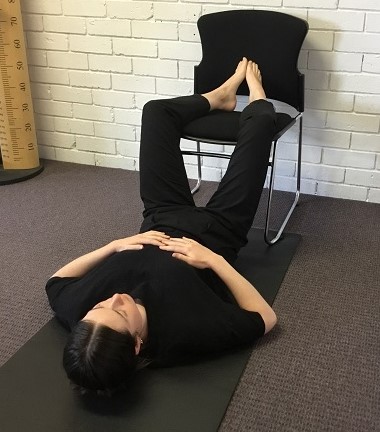
Setting aside time each day to practise a combination of the whole body relaxation, pelvic floor relaxation exercises and quiet breathing in the above position will greatly assist your progress.
After you have gained a little more confidence in relaxing your pelvic floor in the above position, you can then challenge your ability to relax in different positions and situations.
There is so much more....
In addition to this your physiotherapist will assess your individual situation and perhaps offer the following strategies to your treatment programme
- Pelvic / back / hip stretches (see link below.)
- Pelvic floor stretches,
- Electromyographic (EMG) biofeedback (see link below)
- Active relaxation exercises and
- Clinical Pilates


